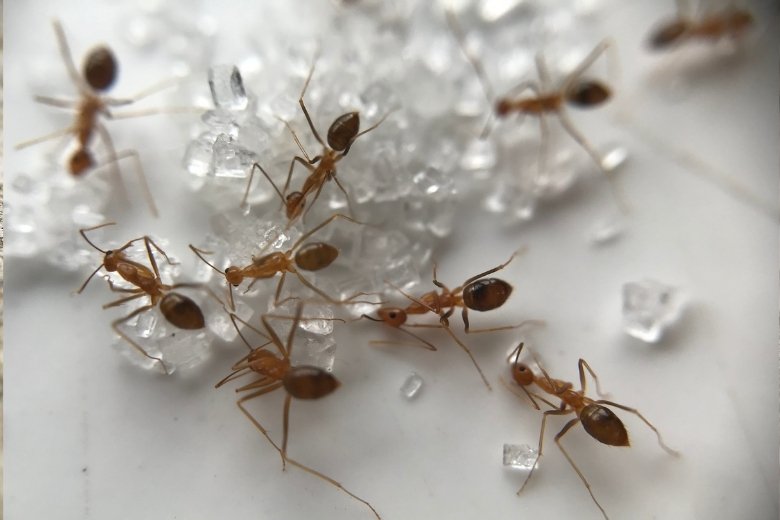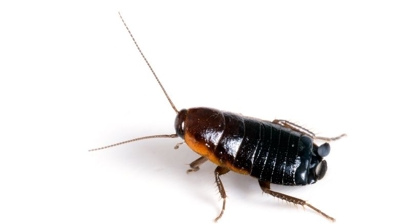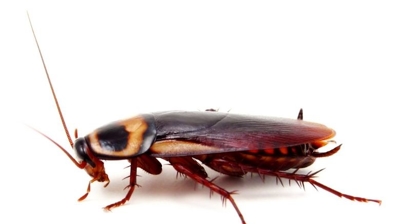
Ant Control Services

Types Of Ants
Ants
Ants can be considered harmful in several ways, depending on the species and the environment they invade. Here are the primary concerns:
- Bites and Stings: Some ants, such as fire ants, deliver painful stings that cause burning, itching, and allergic reactions. Severe cases can lead to anaphylaxis in sensitive individuals.
- Disease Transmission: While ants are not direct disease carriers like mosquitoes, they can crawl over contaminated surfaces and food, potentially spreading bacteria like Salmonella and E. coli.
- Infestation in Kitchens and Pantries: Ants are attracted to sugary and greasy foods, contaminating them by walking over them.
- Difficult to Control: Some ants, like pharaoh ants, scatter their colonies when disturbed, making eradication efforts challenging.
- Carpenter Ants: Carpenter ants burrow into wood to create nests, which can weaken the structural integrity of buildings, much like termites.
- Fire Ants: Fire ants can build large mounds in yards, damaging landscaping and potentially affecting the foundation of structures.
- Short Circuits and Equipment Failure: Species like tawny crazy ants and fire ants are known to nest in electrical boxes, causing short circuits, power outages, and damage to wiring and appliances.
Do Ants Bite? || Do Flying Ants Bite? || What Do Ants Eat? || Do Ants Fly? || Ants vs Termites
Ant Removal
Getting rid of ants from your home or business is important for several reasons:
- Health Risks: While most ants are not inherently dangerous, some species, like pharaoh ants, can carry bacteria and contaminate food and surfaces. They can spread pathogens such as Salmonella and E. coli, increasing the risk of foodborne illness, especially in kitchens, restaurants, or healthcare facilities.
- Food Contamination: Ants are attracted to food sources. Even a small infestation can lead to contamination of packaged or open foods. In commercial settings, this can result in violations of health codes, fines, or damage to your reputation.
- Structural Damage: Certain ant species, such as carpenter ants, don’t just forage—they excavate wood to build their nests. This can weaken wooden structures over time, leading to costly repairs in homes and businesses.
- Nuisance and Disruption: Ants are persistent. They can appear in large numbers, disrupt daily activities, and create an unpleasant environment for residents, customers, or employees. In businesses, this can impact customer satisfaction and employee morale.
- Rapid Infestation Growth: Ant colonies can expand quickly, and once they establish a nest inside a building, eradication becomes much more challenging. Early removal prevents larger infestations that are more expensive and time-consuming to handle.
- Impact on Other Pest Control Measures: If left unchecked, ant infestations can interfere with other pest control strategies. For example, ants can protect aphids outdoors or attract other pests indoors, complicating integrated pest management efforts.
- Professional Image and Compliance: For businesses, having ants visible in food preparation areas, retail spaces, or offices can harm your professional image. Certain industries, like food service, hospitality, or healthcare, are required to maintain strict hygiene standards, and ant infestations can result in regulatory issues.
Removing ants promptly safeguards health, protects your property, prevents larger infestations, and maintains a clean, professional environment.
How To Get Rid Of Ants || How To Get Rid Of Flying Ants || How To Get Rid Of Tiny Ants In Your Kitchen
Ant Control
Hiring our professional ant control offers numerous benefits, especially for homeowners or businesses facing persistent or large-scale infestations. While DIY methods may provide temporary relief, our professional pest control services deliver long-term solutions through a combination of expertise, precision, and strategic applications. Here are some of the benefits of our ant control services:
- Accurate Identification of Ant Species: Different ant species (e.g., carpenter ants, odorous house ants, pavement ants, pharaoh ants) have vastly different behaviors, nesting habits, and responses to treatments. Our professional exterminators can accurately identify the species, which is critical for designing an effective eradication plan. Misidentification often leads to wasted time and money on ineffective DIY solutions.
- Customized Treatment Plans: We tailor our approach based on the specifics of each infestation. We consider the ant species, the size and scope of the colony, nesting sites (indoors or outdoors), environmental factors, and property type. This strategic, site-specific plan increases the likelihood of complete eradication.
- Colony Elimination, Not Just Surface Treatment: DIY sprays and traps often only kill visible ants but fail to reach the colony, allowing the infestation to persist or rebound. Our professionals target the nest directly using baits, non-repellent insecticides, and dusts that are carried back to the colony, killing the queen and stopping reproduction.
- Preventative Measures: A significant advantage of working with our professionals is our ability to provide long-term prevention. This may include sealing entry points, reducing attractants such as moisture or food sources, ongoing monitoring and maintenance. These actions help prevent future infestations, not just treat current problems.
- Health and Safety: Some ant species can contaminate food, cause allergic reactions, or even damage structures (as in the case of carpenter ants). Additionally, improper use of over-the-counter pesticides can pose health risks to humans, pets, and the environment. Our professionals are trained to use safe, regulated products and methods in accordance with EPA standards.
- Time and Cost Efficiency: While hiring an exterminator may seem more expensive upfront, it often saves money in the long term by avoiding repeated ineffective DIY treatments, food contamination, and structural repairs. Our experts solve the problem quickly and efficiently, freeing up your time and reducing stress.
- Guaranteed Results: We will return for additional treatments at no extra cost if the problem persists. This provides peace of mind and ensures a higher standard of accountability.
- Professional Equipment and Technology: Our licensed exterminators have access to commercial-grade products and tools that are not available to the general public. These include advanced baits, non-repellent insecticides, perimeter treatments, and thermal imaging or moisture meters to detect nesting sites behind walls.
- Expertise and Education: Our trained exterminators stay current on the latest industry techniques, regulations, and ant control innovations. This professional knowledge base allows us to provide the most effective and up-to-date solutions that far exceed store-bought options.
- Protection of Property Value: For property owners, especially those managing rentals or commercial spaces, an unchecked ant infestation can lead to tenant dissatisfaction, bad reviews, and even structural damage (from carpenter ants). Our professional extermination services protect your investment and your reputation.
Getting our ant control services is a strategic, results-oriented decision that prioritizes long-term protection, health, and peace of mind. It is particularly crucial when infestations are severe, recurring, or involve structurally damaging or hard-to-control species.
Ant Exterminators
Hiring our local exterminators to handle an ant infestation offers a range of advantages that go beyond simple chemical treatment:
- Accurate Identification of Ant Species: Different ant species require different treatment strategies. For instance, carpenter ants cause structural damage, whereas odorous house ants primarily contaminate food. Our local exterminators are familiar with the species prevalent in your area and can tailor treatment accordingly, ensuring more effective results.
- Targeted and Efficient Treatments: Our local professionals understand the most effective methods for eliminating ants in your region. We know which baits, sprays, or non-chemical techniques work best for the specific ant species, reducing unnecessary use of chemicals and minimizing environmental impact.
- Long-Term Prevention: Ant problems often recur if only visible ants are treated. Our local exterminators address nests, entry points, and conducive conditions around your home or business, reducing the likelihood of re-infestation. We can also provide guidance on sealing gaps, moisture control, and landscaping adjustments that deter ants.
- Quick Response Time: Our local team can typically respond faster than national chains or out-of-area services. Our prompt intervention prevents infestations from spreading throughout the property, which is particularly important for commercial properties and food-handling establishments.
- Knowledge of Local Regulations and Environmental Factors: Our local exterminators are aware of state and county regulations regarding pesticide use and can safely apply treatments in compliance with local rules. We also understand local environmental factors, such as seasonal ant activity, soil types, and typical nesting sites, which affect treatment success.
- Personalized Service and Accountability: Hiring locally means better communication and personalized service. We are invested in maintaining our reputation within the community, which translates into thorough inspections, follow-ups, and customer support if problems persist.
- Cost-Effective Solutions: Because we have experience with local infestations, our local exterminators can often solve problems more efficiently, reducing repeat visits and unnecessary treatments, which can save money in the long run.
- Safety Considerations: Our professional exterminators are trained to apply pesticides safely, protecting children, pets, and non-target areas. We also advise on precautionary measures during and after treatment.
Our local exterminators don’t just “spray for ants”; we provide a comprehensive, informed, and safe solution, addressing the root causes of the infestation while protecting your property and preventing future problems.
What Do Ants Look Like?
Ants are small, social insects belonging to the family Formicidae. They exhibit a wide range of characteristics in terms of appearance, depending on their species and roles within the colony. However, there are some common features that can help you identify ants:
- Size: Ants vary in size, but most species are relatively small, typically ranging from 1 to 5 millimeters in length. Some larger species can grow up to 1 inch.
- Body Segmentation: An ant's body is divided into three distinct segments: head, thorax, and abdomen. The head is equipped with antennae, mandibles (jaws), and compound eyes.
- Color: Ants come in various colors, including black, brown, red, yellow, and even some metallic hues. The color may differ depending on the species.
- Antennae: Antennae are important sensory organs for ants. They are usually elbowed and composed of multiple segments. The shape and size of antennae can vary between species.
- Mandibles: Ants have powerful mandibles that they use for various tasks, such as carrying food and excavating tunnels.
- Waist: Ants have a constricted waist between the thorax and abdomen, which is often a distinguishing feature. This waist can be single or double, depending on the species.
- Legs: Ants have six legs, which are generally relatively long and well-suited for walking and climbing.
- Wings: Some ants have wings, especially during specific stages of their life cycle. Winged ants are often referred to as "alates" and are usually seen during mating flights. After mating, they may shed their wings.
- Hairs and Sculpture: Ants may have fine hairs and distinct body sculpturing, which can be used for species identification under a microscope.
- Role-Specific Characteristics: The appearance of ants can vary within a colony based on their roles. Worker ants are typically smaller and have specialized features for their tasks, while queens and males may have different characteristics, especially during the mating phase.
There are over 12,000 known ant species, so there can be significant variation in appearance among them. If you're trying to identify a specific ant species, it may require a more detailed examination or the expertise of an entomologist.
Where Are Ants Found?
Ants are highly adaptable insects, and you can encounter them in a wide range of environments, both indoors and outdoors. Here are some common places where you might come across ants:
- Outdoors: Ants are frequently found in gardens, lawns, and other outdoor spaces, where they forage for food and build nests in the soil. Ants are essential components of many ecosystems, and you can find them in forests, grasslands, and other natural environments.
- Around Buildings: Ants can enter homes in search of food or water. Common indoor species include the odorous house ant, pavement ant, and carpenter ant. Ants are often attracted to kitchens because of the availability of food scraps and water. They may come in through cracks or gaps. Ants might be found in bathrooms, especially if they're seeking water sources. Some ants, like pharaoh ants, can nest in wall voids and under flooring.
- Picnic Areas and Campgrounds: Ants are drawn to places where people eat or leave food scraps, making picnic areas and campgrounds common locations to encounter them.
- Pet Food Bowls: Ants are attracted to pet food, so they may gather around your pet's food bowl.
- Playgrounds: Children's play areas can sometimes be infested with ants, particularly if there are food remnants.
- Hiking Trails: While hiking, you may encounter ants on the ground, especially if you disturb their nests.
- Farms and Agricultural Areas: Ants can be found in agricultural fields, where they play various roles in ecosystems.
- Trash Bins and Compost Piles: Ants are often attracted to trash bins and compost piles, where they can find food and organic matter.
- Tree Trunks and Foliage: Some ant species make nests in tree trunks or build nests in foliage.
- Construction Sites: Carpenter ants, in particular, are known for nesting in wood, and they may be found at construction sites.
Ants are ecologically significant and play various roles in different environments. While some species can be pests in homes and gardens, others are beneficial as they contribute to soil aeration and nutrient cycling. If you have issues with ants in your home, it's advisable to address the source of the problem, such as eliminating food sources and sealing entry points, or consult our ant control professionals for assistance.
Ant Life Cycle
Ants go through a complete metamorphosis with four distinct stages in their life cycle: egg, larva, pupa, and adult. The duration of each stage varies depending on the species, environmental conditions, and caste (worker, queen, or male). Below is a breakdown of each stage:
- Egg Stage: The life cycle begins when the queen lays eggs. Ant eggs are tiny, oval, and translucent white. If fertilized, they develop into female ants (workers or queens); if unfertilized, they become male ants. Eggs typically hatch within 1-2 weeks, depending on the species and environmental factors like temperature and humidity.
- Larva Stage: Once hatched, the ant larvae resemble small, legless worms. They rely on worker ants for food, which is regurgitated into their mouths (trophallaxis). During this stage, they grow rapidly and molt several times as they shed their outer skin. Their diet, especially for potential queens, may be richer in proteins and fats to support their development.
- Pupa Stage: After reaching full size, the larva transforms into a pupa. In some species, pupae are enclosed in a silk cocoon, while others remain exposed. The pupa undergoes internal changes, developing adult body structures such as legs, antennae, and wings (for reproductive ants). This stage lasts anywhere from a few days to several weeks, depending on conditions and species.
- Adult Stage: Once fully developed, the ant emerges as an adult. Adult ants belong to one of three castes. Queens are larger, fertile females responsible for reproduction. They can live for several years. Workers are sterile females that handle foraging, nest maintenance, and caring for the young. They live for several weeks to a few years. The sole purpose of Males (Drones) is to mate with a queen. They have wings and die shortly after mating.
- Ant colonies grow as queens continue to lay eggs, and workers expand the nest and care for offspring.
- Once a colony matures, it produces new reproductive ants (winged males and females) that participate in a nuptial flight, starting new colonies after mating.
Understanding the ant life cycle is crucial for effective ant control, as targeting specific stages can help disrupt colony growth.
Learn more about: Ant Colonies
Learn more: What Do Ant Eggs Look Like?
Learn more: What Are Ant Larvae?
Learn more: What Do Queen Ants Look Like?

Hear From Our Happy Customers
-
"Very Knowledgeable"
The tech that arrived was courteous, professional, and very knowledgeable. He was Great.
- Uerial I. -
"Fantastic & Patient"
Jarvis was fantastic and patient. He answered my questions with an in-depth explanation and addressed all of my areas of concern. Would love for him to be my assigned tech going forward. Well done!
- Yonnette M. -
"Wonderful Service"
Wonderful service. Jarvis is great. Took care of everything I needed. Thank you!
- Henry P. -
"Exceeds Expectations"
I can’t say enough positive things about this company... The tech that came out, Jarvis went above and beyond my expectations. Thank you guys, I will continue using your services.
- Jake M. -
"Great Communication"
Tech was on time, communication was great, and he accommodated my needs.
- Alonzo W. -
"Professional & Considerate"
I’m pleased with Miche services. Jarvis came today. Professional and considerate. Thank you!
- Judy B.



